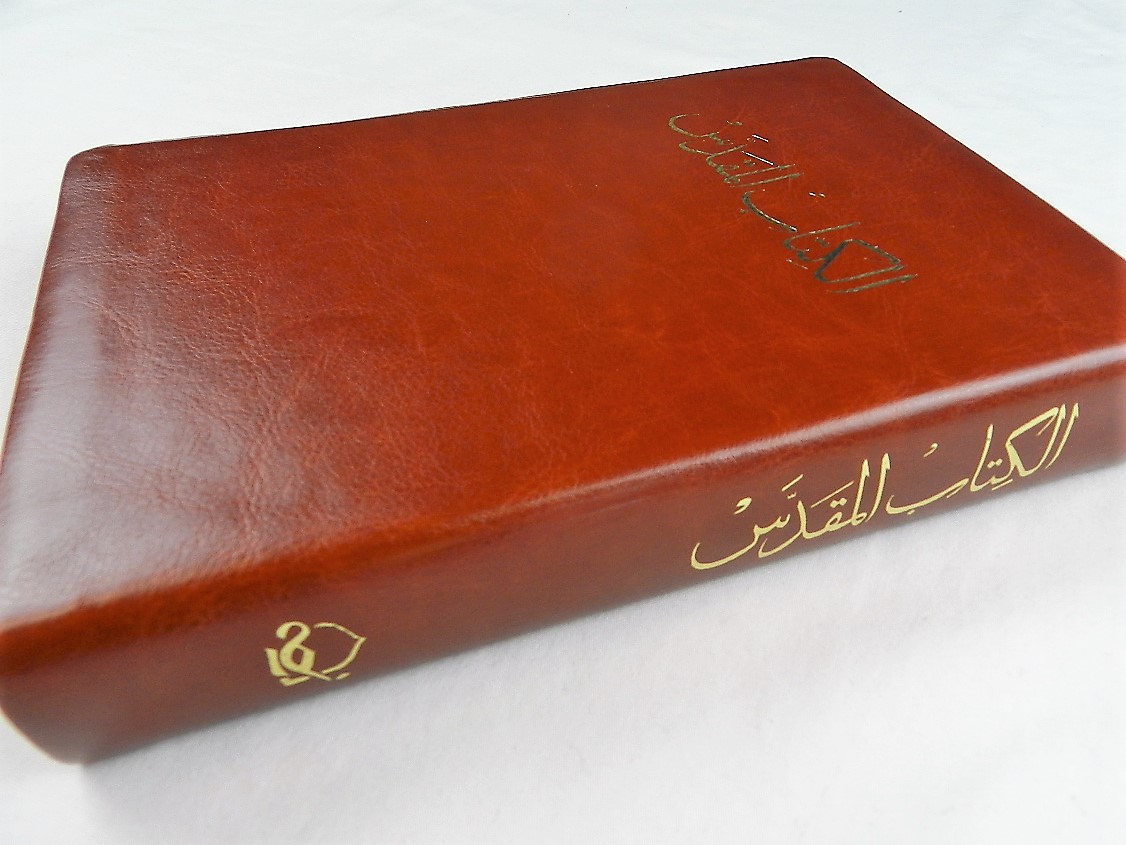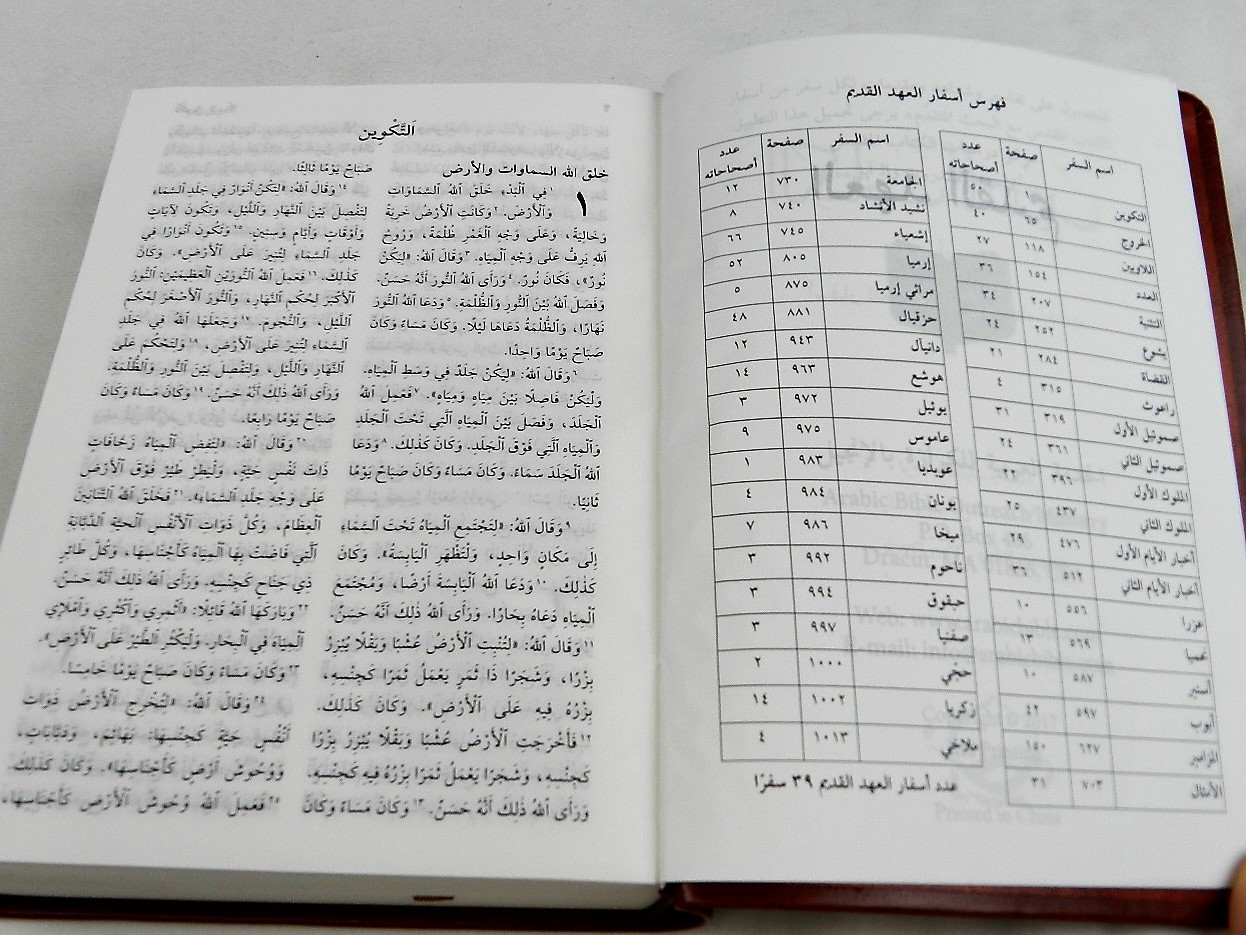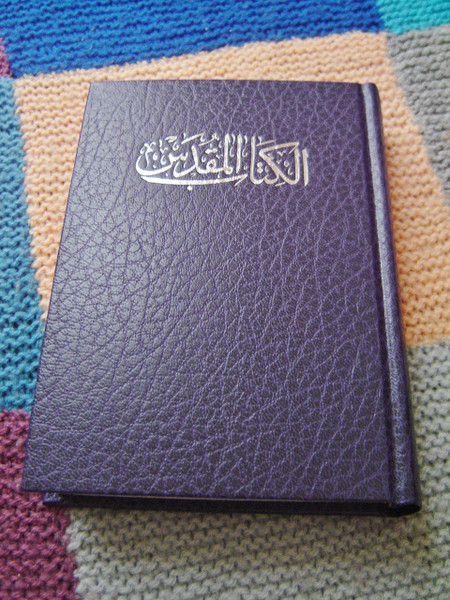Description
Luxury Arabic Van Dyke Bible / Brown Leather Like Cover
The Classic Translation by Cornelius Van Alen Van Dyck
Product Features
- Title: Luxury Arabic Van Dyke Bible - Brown Leather-Like Cover
- Binding: Imitation Leather Cover
- Publisher: Arabic Bible Outreach Ministry
- Publication Date: 2017 (Second Printing)
- Language: Arabic
- Format: Whole Bible in Medium Size
- Color: Brown
- Special Features: Two-column format with paragraph titles and punctuation, color maps
Overview
The Luxury Arabic Van Dyke Bible, bound in a brown leather-like cover, offers a classic and timeless presentation of the revered Van Dyck translation. Published by the Arabic Bible Outreach Ministry, this medium-sized Bible features a two-column text format with paragraph titles and punctuation, enhancing readability and study. The inclusion of color maps adds a visual dimension to biblical exploration. This edition, printed in 2017, is a second printing of one of the most popular Arabic translations of the Bible, originally completed under the direction of Cornelius Van Alen Van Dyck.
Interesting Facts
- Translation History: The Van Dyck Bible translation was initiated by Eli Smith in 1847 and completed by Cornelius Van Alen Van Dyck after Smith's death. It involved collaboration with notable figures such as Nasif al Yaziji, Boutros al Bustani, and Yusuf al-Asir.
- Completion Dates: The New Testament was completed on March 9, 1860, and the Old Testament followed on March 10, 1865.
- Preservation: The original manuscript is preserved in the Near East School of Theology Library in Beirut.
- Distribution: Approximately 10 million copies of this version have been distributed since 1865.
- Acceptance: This translation is widely accepted by the Coptic Church and Protestant churches.
- Textus Receptus: The translation is based on the same Textus Receptus as the English King James Version, known for its literal translation style.
- Printing Plates: Most printings use traditional plates that follow an older "stacking" style of Arabic script, though newer versions employ a more common Arabic font.
- Translator: Cornelius Van Alen Van Dyck, an American missionary and translator, is celebrated for his deep understanding of Arabic history, culture, and language, and for his significant contributions to Arabic literature.
Publishers
- Arabic Bible Outreach Ministry
Hashtags
#VanDykeBible #ArabicBible #LuxuryBible #CorneliusVanDyck #ClassicTranslation #ArabicBibleOutreach #BiblicalStudies #ChristianLiterature #HistoricalTranslation #BibleInArabic
Arabic Translation
نظرة عامة
الكتاب المقدس الفاخر بنسخة فان دايك باللغة العربية، مغلف بغلاف بني يشبه الجلد، يقدم عرضًا كلاسيكيًا وخالدًا للترجمة المحترمة لفان دايك. نشرته وزارة التواصل العربي للكتاب المقدس، يتميز هذا الكتاب المقدس متوسط الحجم بنص بتنسيق عمودين مع عناوين الفقرات والترقيم، مما يعزز القراءة والدراسة. إضافة الخرائط الملونة تضيف بُعدًا بصريًا لاستكشاف الكتاب المقدس. تم طباعة هذا الإصدار في عام 2017 وهو الطبعة الثانية لإحدى أشهر الترجمات العربية للكتاب المقدس، والتي اكتملت أصلاً تحت إشراف كورنيليوس فان ألين فان دايك.
حقائق مثيرة للاهتمام
- تاريخ الترجمة: بدأت ترجمة الكتاب المقدس فان دايك بواسطة إيلي سميث في عام 1847 وأكملها كورنيليوس فان ألين فان دايك بعد وفاة سميث. تضمنت التعاون مع شخصيات بارزة مثل نصيف اليازجي، بطرس البستاني، ويوسف الأسير.
- تواريخ الإكمال: تم إكمال العهد الجديد في 9 مارس 1860، والعهد القديم في 10 مارس 1865.
- الحفظ: يتم حفظ المخطوطة الأصلية في مكتبة مدرسة اللاهوت بالشرق الأدنى في بيروت.
- التوزيع: تم توزيع حوالي 10 ملايين نسخة من هذه النسخة منذ عام 1865.
- القبول: تحظى هذه الترجمة بقبول واسع في الكنيسة القبطية والكنائس البروتستانتية.
- Textus Receptus: تعتمد الترجمة على نفس Textus Receptus كنسخة الملك جيمس الإنجليزية، المعروفة بأسلوب الترجمة الحرفية.
- ألواح الطباعة: تستخدم معظم الطبعات ألواح الطباعة التقليدية التي تتبع نمط "التكديس" القديم للخط العربي، رغم أن النسخ الأحدث تستخدم خطًا عربيًا أكثر شيوعًا.
- المترجم: كورنيليوس فان ألين فان دايك، مبشر ومترجم أمريكي، مشهور بفهمه العميق لتاريخ العرب وثقافتهم ولغتهم، ولإسهاماته الكبيرة في الأدب العربي.










































